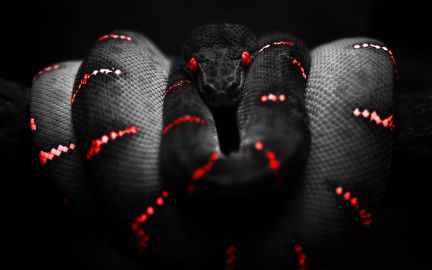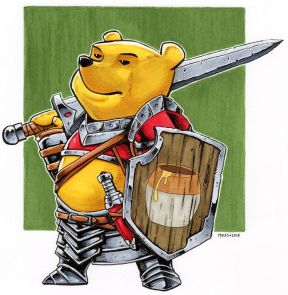The Food of the Gods
Then Elias was afraid, and rising up he went whithersoever he had a mind: and he came to Bersabee of Juda, and left his servant there, And he went forward, one day’s journey into the desert. And when he was there, and sat under a juniper tree, he requested for his soul that he might die, and said: It is enough for me, Lord, take away my soul: for I am no better than my fathers. And he cast himself down, and slept in the shadow of the juniper tree: and behold an angel of the Lord touched him, and said to him: Arise and eat. He looked, and behold there was at his head a hearth cake, and a vessel of water: and he ate and drank, and he fell asleep again. (1 Kings 19:3-6)

Fantasy roleplaying games often include divine magic, usable by clerics or other servants of deities. Among the magical effects these divine servants call upon is the ability to create food and drink. For example, in the most recent edition of D&D, the spell create food and water is a 3rd-level spell that creates “45 pounds of food and 30 gallons of water”, which is “enough to sustain up to fifteen humanoids or five steeds for 24 hours.” Furthermore, the “food is bland but nourishing, and spoils if uneaten after 24 hours. The water is clean and doesn’t go bad.”
Other fantasy games based on some version of D&D have similar spells. Thus, we find Create Food and Drink in Charlie Mason’s excellent White Box: Fantastic Medieval Adventure Game as a 5th-level Cleric spell. That makes it among the highest-level Cleric spells in the game, a use of a rare resource just to create “a one-day supply of simple food and drinking water for 24 humans”.
I’ve played fantasy roleplaying games for nigh on four decades, and I have no memory of any player ever using a spell to create food or water during a game. The closest I remember is goodberry, a 1st-level spell that not only creates food but also helps heal injuries.
When we look at religion and mythology for examples of divine food, we don’t often find things as mundane as “bland but nourishing”. Ambrosia, soma, amrita, magical peaches, et cetera, variably grant immortality, greatly extend the consumer’s lifespan, heal injuries and disease, and so on.
So, here are my suggestions about making spells that create food and water a little more magical for three different fantasy roleplaying games.
AD&D
Create Food & Water
Level: 3
Range: Touch
Duration: Permanent
Area of Effect: 1 cubic foot/level
Components: V, S
Casting Time: 1 turn
Saving Throw: None
Explanation/Description: When this spell is cast, the cleric causes food and/or water to appear. The food thus created is highly nourishing, and each cubic food of the material will sustain three human-sized creatures or one horse-sized creature for a full day. For each level of experience the cleric has attained, 1 cubic foot of food and/or water is created by the spell. Up to three times per day, a creature can spend 3 turns to make a meal of this magical food and/or water. During this time of rest and gustation, the creature heals 1d8 hit points (as cure light wounds). If the creature is afflicted by blindess or disease, the creature gets to make a new saving throw against the effect (assuming a saving throw was allowed to begin with). If the creature succeeds on this saving throw, the creature is healed of the condition (as cure blindess or cure disease).
D&D 5E
Create Food and Water
3rd-level conjuration
Casting Time: 1 action
Range: 30 feet
Components: V, S
Duration: Instantaneous
You create 45 pounds of food and 30 gallons of water on the ground or in containers within range, enough to sustain up to fifteen humanoids or five steeds for 24 hours. The food is pleasing and nourishing, but spoils if uneaten after 24 hours. The water is clean and doesn’t go bad.
A creature who consumes this food and drink during a short rest regains a number of hit points equal to 1d8 + your spellcasting ability modifier. The meal also ends any one of these conditions which might be afflicting the creature: blinded, deafened, paralyzed, or poisoned.
White Box
Create Food and Drink
Spell Level: C5
Range: Close
Duration: Instantaneous
This spell creates a one-day supply of remarkable food and drinking water for 24 humans (or horses, which drink the same amount as a man for game purposes).
Up to three times per day, a creature may consume this remarkable food and water, taking 30 minutes to rest, eat, and drink. After doing so, the creature is affected in one of the following ways:
1. The creature is cured of all diseases, including those magically inflicted.
2. The creature regains 1d6+1 HP.
3. A poison affecting the creature is counteracted (but the food and water cannot bring the dead back to life).




